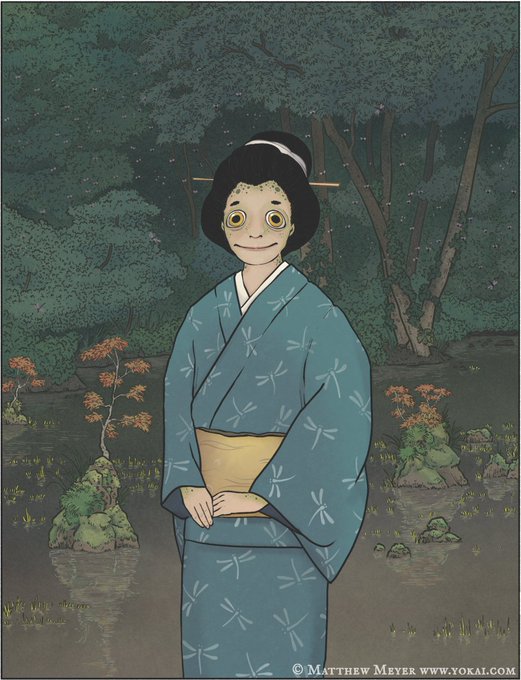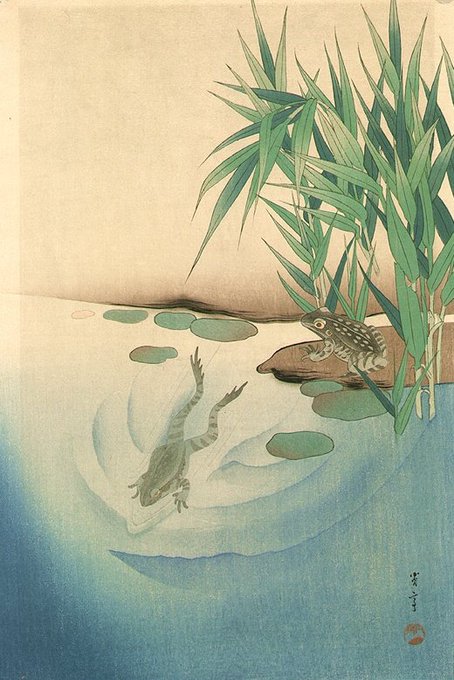...themselves. They can also re-play all the songs that have ever been played on them in the past, whether you want to hear them or not. Possibly the most well-known musical yokai is the biwa bokuboku, which is pictured below.
🎨1 & 3. Matthew Meyer
2 & 4. Toriyama Sekien
3/3
...during times of drought, then akashita will come and punish them by draining all their water and then snatching them with its long red tongue.
🎨1. Matthew Meyer
2. 'Akaguchi' from the Hyakkai Zukan by Sawaki Suushi.
2/2
There are many tales in #JapaneseFolklore of frog brides. In these stories, magical frogs take on human form with the goal of marrying a human man. They look just like regular women, only they tend to be quite frail and often don't have the strength to do many...
#SwampSunday
1/3
In #JapaneseFolklore, nasu baba is a #yokai with dark purple skin and the features of an ugly old woman resembling an eggplant with teeth. She haunts a temple complex on Mount Hiei, usually lurking in dark rooms to avoid being seen. Despite her wild and...
#FolkloreSunday
1/2
...harmless, were rather unsettling. In one tale, a man's beloved hen died and the corn grew in the shape of a chicken, causing him to believe her soul had refused to leave him and became stuck in the corn plant instead.
🎨1. Matthew Meyer
2. TheArtVan on Deviant Art
2l2
...temples. They are nocturnal because the daylight sun is far too bright for all their eyes. They're also very shy and tend to avoid human contact. They do like to guard the area they live from intruders and thieves though. If someone suspicious should arrive, one of...
2/4
In #JapaneseFolklore donotsura is a headless #yokai whose strange face appears on its torso. Little is known about this creature but it featured on many yokai picture scrolls. It may be based on a play on words that translated as 'lowering a face.'
#FolkloreSunday
1/2
In #JapaneseFolklore there is a #yokai known as akateko that takes the form of a red, disembodied child's hand. It drops from the branches of Japanese honey locust trees to 'surprise' those below. Aside from the extreme creepiness of this yokai, it is believed...
#FolkloreSunday
In Japan, Jurojin and Fukurokuju are both gods of wisdom and longevity. They are derived from the Chinese star god Shou and are both members of the seven lucky gods of Japan. Their elongated heads are said to accommodate their huge brains and their scrolls...
#MythologyMonday
1/2
...hairy mountain spirit is a takiwaro. Takiwaro live on mountain cliffs and are said to take this form for three years before transforming back into an enko. This process of migration between the water and the mountains is seen in yokai tales all over Japan, although the...
3/5
















